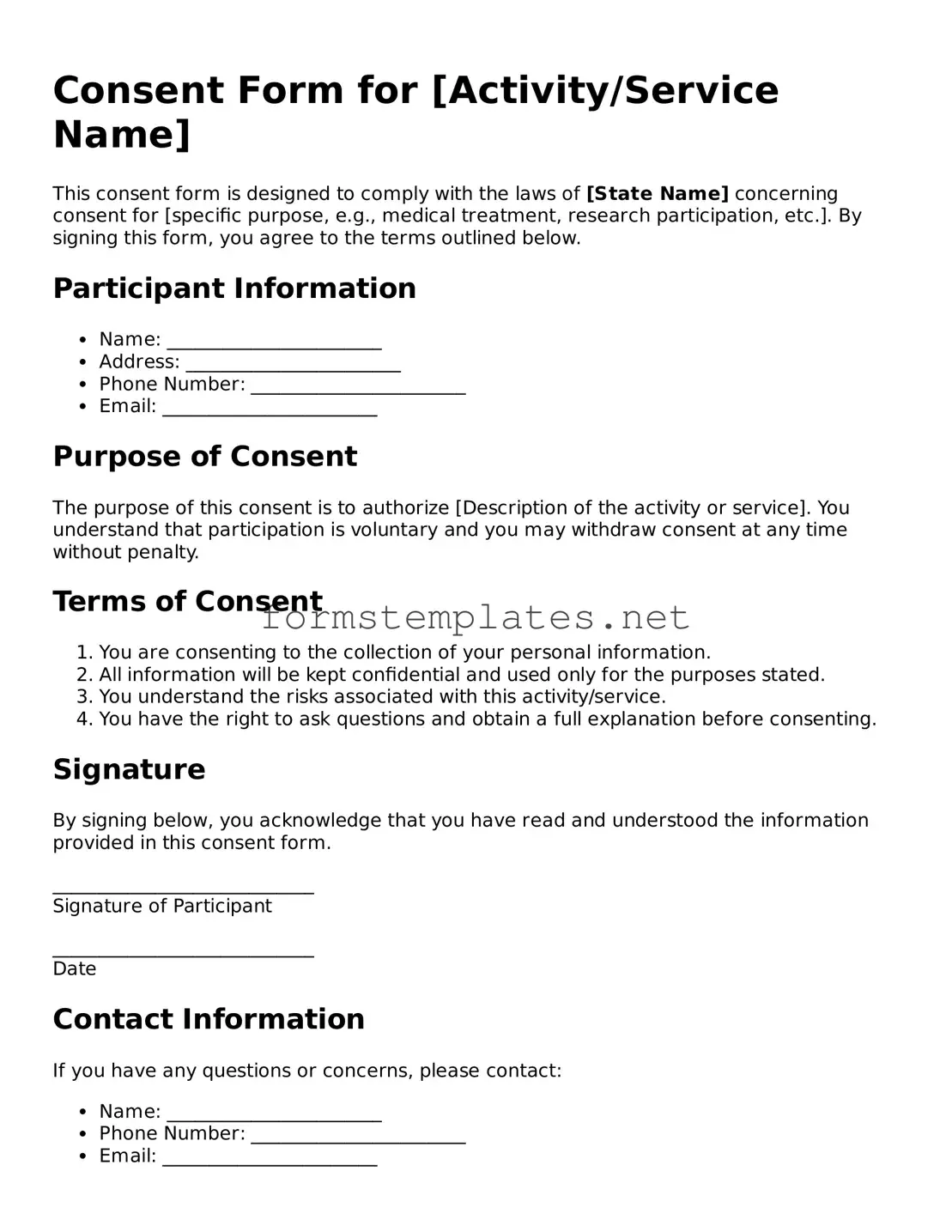Consent Form for [Activity/Service Name]
This consent form is designed to comply with the laws of [State Name] concerning consent for [specific purpose, e.g., medical treatment, research participation, etc.]. By signing this form, you agree to the terms outlined below.
Participant Information
- Name: _______________________
- Address: _______________________
- Phone Number: _______________________
- Email: _______________________
Purpose of Consent
The purpose of this consent is to authorize [Description of the activity or service]. You understand that participation is voluntary and you may withdraw consent at any time without penalty.
Terms of Consent
- You are consenting to the collection of your personal information.
- All information will be kept confidential and used only for the purposes stated.
- You understand the risks associated with this activity/service.
- You have the right to ask questions and obtain a full explanation before consenting.
Signature
By signing below, you acknowledge that you have read and understood the information provided in this consent form.
____________________________
Signature of Participant
____________________________
Date
Contact Information
If you have any questions or concerns, please contact:
- Name: _______________________
- Phone Number: _______________________
- Email: _______________________
Thank you for your consent.
